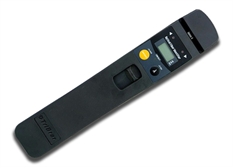Optical Fibre Diameter Analyser Providing Reliable Fibre Measurements
Optical Fibre Diameter Analyser Providing Reliable Fibre Measurements
Blog Article
Essential Functions to Look for in Optical Fibre Testing Equipment
When assessing optical fiber screening devices, numerous crucial features necessitate cautious factor to consider to ensure ideal performance and reliability. Compatibility with existing sector standards improves functionality, while advanced measurement capabilities, including TDR and OTDR screening, offer critical insights into network stability. Understanding these functions will lose light on how to select the best tools for your particular requirements.
Precision and Accuracy
Accuracy and precision are vital parameters in the evaluation of optical fiber screening devices. These two characteristics make sure that dimensions show the real performance of fibre optic systems, which is vital for effective network installment, upkeep, and troubleshooting. Accuracy refers to the closeness of a measured worth to the real value, while precision represents the repeatability of dimensions under unchanged conditions.
When picking optical fiber testing tools, it is necessary to take into consideration instruments that give high accuracy and accuracy to lessen errors in data analysis. Instruments such as optical time-domain reflectometers (OTDRs) and power meters ought to have calibration systems to make sure constant performance in time. Furthermore, the requirements offered by manufacturers should detail the equipment's dimension unpredictability, which straight influences the dependability of test outcomes.
Moreover, the efficiency of optical fibre testing equipment can be affected by environmental factors, such as temperature and humidity. Selecting devices made to reduce these variables will certainly boost dimension integrity. In conclusion, purchasing optical fibre testing devices with durable accuracy and accuracy attributes is basic for maintaining ideal network efficiency and guaranteeing the honesty of fiber optic communications.

User-Friendly User Interface
The efficiency of optical fiber testing tools is not entirely determined by its precision and precision; an easy to use interface plays a significant role in boosting functional effectiveness. A properly designed interface streamlines the communication in between the service technician and the tools, enabling an extra instinctive understanding of complicated functions.
Secret features of an user-friendly interface include clear navigating food selections, sensible designs, and easily accessible controls. These aspects allow service technicians to perform tests promptly without considerable training, decreasing the chance of customer error - ofda. Additionally, aesthetic indications such as progression bars, signals, and graphical depictions of information can significantly boost the individual experience by offering instant comments on the screening process.
Furthermore, personalized settings can additionally simplify procedures by enabling customers to readjust criteria according to particular screening needs. This adaptability not just conserves time but additionally ensures that the tools satisfies varied application demands.
Integrating aid functions, such as tooltips and extensive guidebooks, right into the user interface can better encourage customers, advertising self-sufficiency and confidence in running the devices. Eventually, a straightforward user interface is vital for optimizing the possibility of optical go to these guys fibre testing equipment, resulting in much more efficient and reliable screening end results.
Transportability and Durability
Mobility and durability are essential qualities of optical fibre testing tools, making certain that it can withstand the rigors of numerous settings while remaining very easy to transport. Specialists often operate in varied setups, from telecommunications hubs to visit their website remote installations, making it crucial that testing devices are lightweight and small (ofda). Devices created with portability in mind normally includes ergonomic deals with and cases that facilitate simple and easy motion, hence enhancing operational effectiveness on-site
Sturdiness is just as necessary, as optical fibre testing devices is commonly exposed to severe problems, consisting of temperature level variations, dampness, and physical influences. Gadgets constructed with tough products such as strengthened plastics or steel housings are better suited for these environments, decreasing the risk of damage during usage and transportation. Additionally, tools with water and dust resistance ratings, such as IP rankings, guarantees trusted performance in difficult conditions.
Compatibility With Specifications
Making sure compatibility with industry criteria is essential for optical fibre screening equipment, as it directly influences the dependability and validity of examination results. Optical fibre networks undergo rigorous efficiency criteria established by different companies, including the Telecommunications Industry Association (TIA) and the International Electrotechnical Compensation (IEC) Checking tools should adhere to these standards to make certain that dimensions are constant and similar across various systems and settings.
When choosing optical fiber testing tools, customers ought to verify that the tool meets appropriate standards essential to their specific application, such as those relevant to attenuation, transmission capacity, and crosstalk. Devices that is compliant with established requirements not just aids in attaining precise results but additionally assists in interoperability amongst tools from various manufacturers.
Furthermore, compatibility with requirements makes certain that the equipment can be utilized in see here now regulatory compliance situations, which is vital for tasks in fields such as telecommunications, aerospace, and army applications. Consequently, investing in optical fiber screening equipment that straightens with existing market requirements is a basic aspect of preserving quality control and accomplishing optimal network performance.
Advanced Dimension Capabilities
Advanced dimension capabilities are a defining function of contemporary optical fibre testing equipment, permitting for thorough analysis of network efficiency. These abilities make sure that professionals can assess essential parameters such as signal loss, diffusion, and data transfer, which are essential for preserving optimal communication efficiency.
One secret facet is the capability to perform time-domain reflectometry (TDR) and optical time-domain reflectometry (OTDR) tests. These strategies make it possible for individuals to recognize mistakes, measure the size of fibres, and figure out the area of flaws with exceptional accuracy - ofda. Additionally, innovative tools usually consists of the capability to determine optical power degrees, assisting to analyze the general wellness of the network and guarantee conformity with the needed specs.
Additionally, some testing tools provide sophisticated formulas for real-time evaluation, allowing quicker medical diagnosis and troubleshooting. In verdict, spending in optical fiber testing tools with advanced dimension capabilities is important for ensuring network integrity and performance in today's demanding telecoms landscape.
Conclusion

Report this page